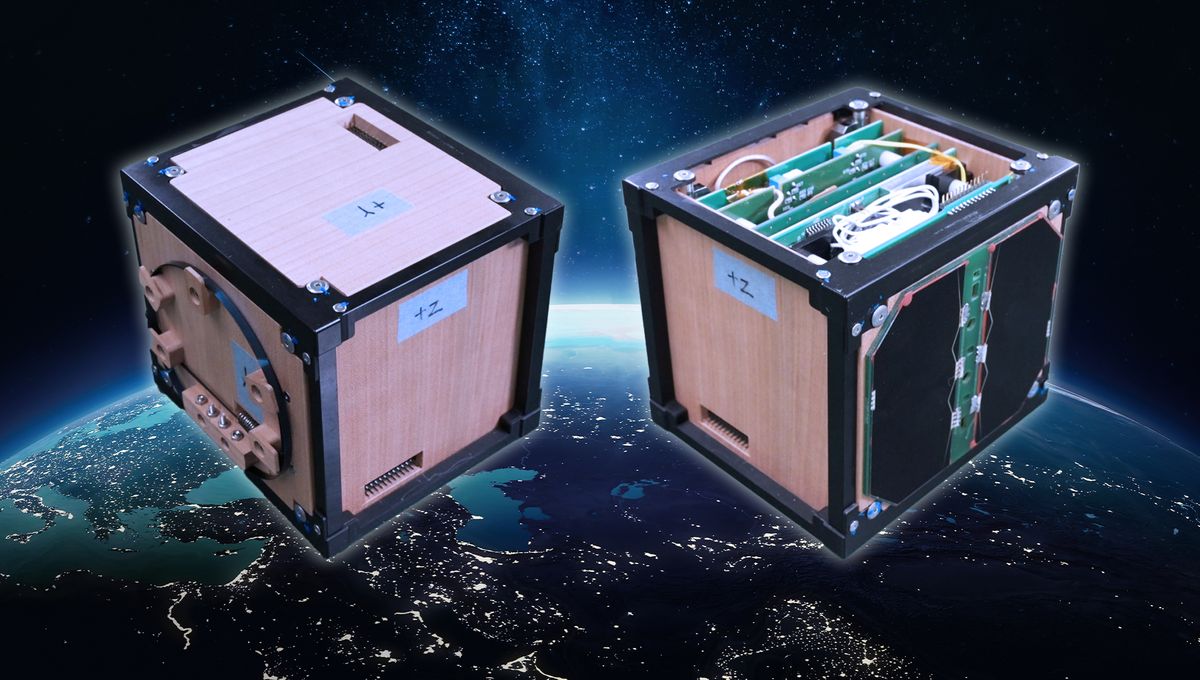
This September could see the world’s first wooden satellite launch to space, thanks to scientists in Japan. If it’s succesful, it could open doors for more environmentally friendly satellite reentries, something that is increasingly important with the rise of objects being sent to – and returning to Earth from – space.
Researchers at the University of Kyoto together with the logging company Sumitomo Forestry have developed what is likely going to be the first deployed wooden satellite. The mission, part of the LignoStella Space Wood Project, builds on previous studies of the properties of wood in space and seeks to adress the issue of traditional satellites that deposit harmful metal particles in Earth’s atmosphere when they burn up on reentry.
The mission will see a small cube satellite made of Hoonoki, a type of Magnolia wood, sent to the International Space Station( ISS) where it will then be deployed into low-Earth orbit. The wood has been selected following a 240-day-long test of different types of wood on the ISS.
The goal is to demonstrate that replacing the traditional aluminum with wood is a sustainable approach to making satellites, which will burn up more easily in Earth’s atmosphere.
The amount of space junk in orbit is increasing following the massive increase in private satellites such as SpaceX’s Starlink megaconstellation. The risk of space objects not burning up through the atmosphere has ramped up with the increase in falling space debris onto civilian properties in the last few years, including a piece of a discarded cargo pallet from the ISS going through the roof of a house in Florida and a piece of a SpaceX rocket landing on a farm in Canada just this year. Wood would definitely help prevent that.
It’s not the first proposed wooden satellite. The WISA Woodsat was supposed to have launched in 2021 but it did not fly for unclear reasons. But using wood might truly be a way forward. The ISS test showed that despite the extreme environment of space, wood doesn’t seem to be majorly affected by it. There was no cracking, warping, peeling, or surface damage.
The development of such a spacecraft is very exciting, and researchers will study how it holds up in space once deployed, particularly looking at how the wood expands and contracts, degrades, and protects the electronic equipment. If it performs well, other applications – including future human habitats in space – might be considered.
Source Link: World’s First Wooden Satellite To Launch This Year Could Combat Space Pollution